New to quilting? Let’s get you started! Getting into quilting can seem overwhelming, especially with all the new terms and techniques. But don’t worry, we’re here to help! We’ll guide you through the essential supplies and tips to kickstart your quilting journey. In this comprehensive guide, we’ll cover the fundamental supplies and techniques you need to embark on your quilting journey. From selecting the right fabric to mastering basic stitches, we’ll walk you through every step. Discover essential tips for creating your first quilt block and explore a detailed supply list to ensure you have everything you need.
How to Get Started in Quilting
So, what supplies do you need? This is a great question. A good idea is not to go overboard until you are sure quilting is an activity you are going to enjoy. Another way to look at this is to only buy the supplies and tools you will need for your first quilt – for example there are so many rulers on the market today, try to buy just the ones you need for your first piece so you don’t wind up with a bunch of something you may not need again.
You can also borrow from a quilting friend; this should start giving you a feel for the many different brands and selections before you go out and buy your own supply of tools. (Watching your pennies too? It’s easy to quilt on a budget if you use your resources and creativity.)
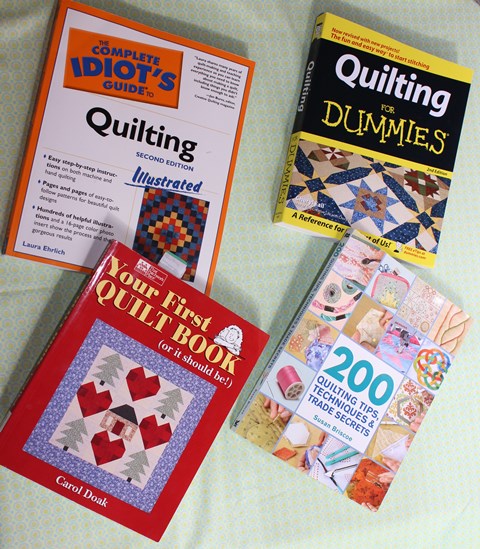
As a brand new quilter, I also recommend picking up a couple books to give yourself a good base level of information. There are many terrific books and patterns out there to choose form. I always recommend this fabulous book: Your First Quilt Book: Or It Should Be! by Carol Doak.
You can also head to your local quilt shop and have them help you pick out a beginner’s pattern. If your local shop offers classes, don’t hesitate to sign up. This is great for to learn the tricks of quilting hands-on before you start off with bad habits, and it’s also a great place to socialize with others who are just beginning as well. Quilting is all about community and I highly recommend becoming part of that community. Don’t hesitate to join a quilting club at your shop or local guild! Bonus: guilds will often have guest speakers and who doesn’t love free lessons!
When you’re ready belly up to your sewing machine to start that first block, make sure you’ve chosen a simple pattern with large pieces. I really like to start with the four patch quilt block or nine patch because it teaches you how to strip piece as well as how to match seams and press properly.
And lastly, as promised, here is your essential supply list. The supplies pictured here are from my own personal stash – don’t feel you have to purchase these particular brands. There are so many wonderful products out there and everyone has their own brand preferences. (Different strokes for different folks!) Start with these and you will soon see how quickly your stash will grow!
Essential Quilting Supply List
Quilt-quality fabric.
Quilt quality fabric has less stretch than regular fabric and is more tightly woven. My advice is to opt for good quality quilting fabric if you want your quilt to stand the test of time. Generally speaking, if you purchase your fabric from a quilt store it will be quilt quality. If purchasing from a fabric store, you will want to ask where they keep the quilt quality fabric.
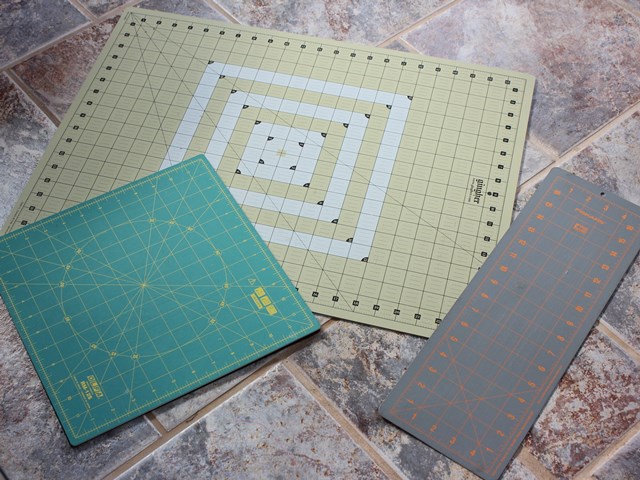
Cutting mat
There are many sizes to choose from. My advice is to buy a mid-range size – not the smallest but not the biggest either. Be sure to buy a self-healing mat too; the extra dollars will be worth it. Make sure to care for your cutting mat regularly too.
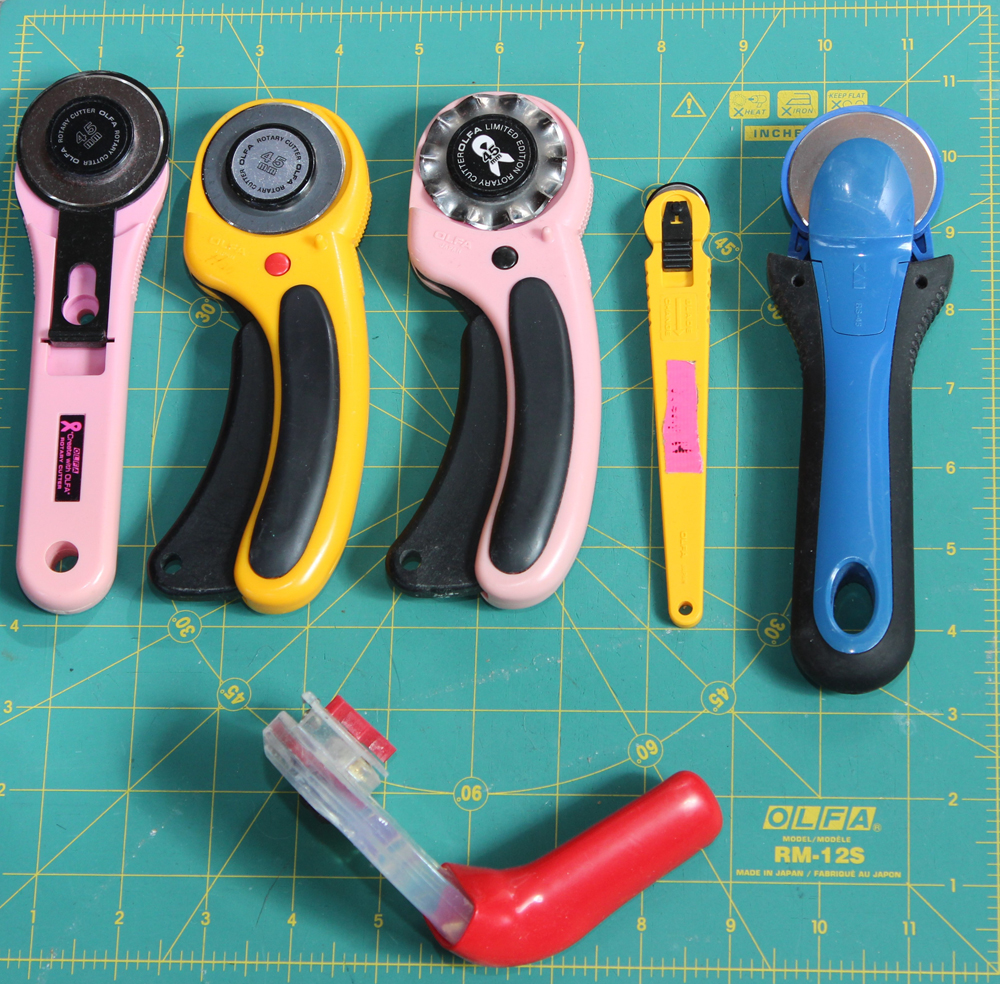
Rotary cutter
When looking for rotary cutters be sure to get one that has a safety clasp or is self-closing. Many quilters leave their rotary cutters open and end up in the emergency room getting stitches! The blades are very sharp, so always take precaution when using them.

Rotary cutter replacement blades, marking chalk, and a pincushion.
I made this little turtle pincushion for a friend. Isn’t she cute?

24 x 8½ inch ruler.
I prefer this size because it is more versatile than thinner rulers. Just a personal preference.

6½ x 6½ or 12½ x 12½ inch ruler.
Good sizes for squaring up.
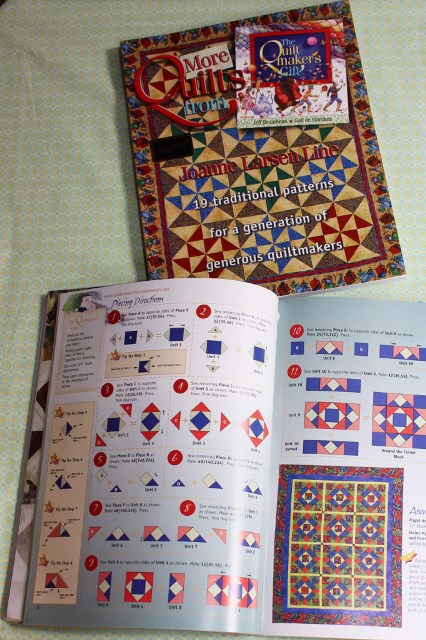
Basic pattern.
Select an easy or beginner quilt pattern for your first try. Check out our library of quilt patterns to get started!
Thread and 80/12 sewing machine needles.
There are many great brands of thread out there, and you will want to buy for quality. Aurifil, Gutermann, Mettler, Sulky, and Superior Threads are just a few good options. Use a medium weight quilting thread in a neutral color like cream, tan, beige, white, or grey – they tend to blend best with your fabric. For needles, you can purchase universal ones for when you are piecing, but you will want to use designated quilting needles for when you are quilting. By “quilting” I mean the process of putting all three layers together to finish your quilt.
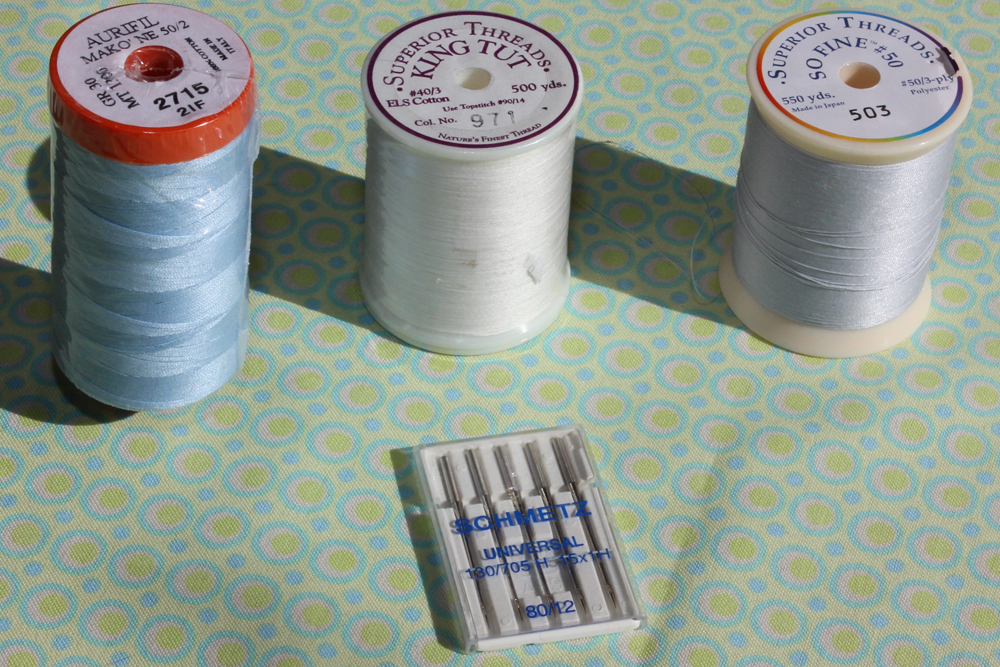
Sewing machine.
This one’s a no-brainer unless of course you will be starting with hand quilting. Make sure your machine is in good working order so you don’t get frustrated with machine tension or other stitch issues later on.

A quarter inch foot and a walking foot.
You will be thrilled with the quarter inch foot because it will keep your seams consistent and precise. The walking foot will help feed your fabric through the machine, working in tandem with the feed dog. It is particularly important in binding your quilt as well as doing curves and quilting straight lines.
Related video: Quarter Inch Seam Test

Small scissor snippers and a seam ripper.
The snippers are perfect for getting loose threads. And don’t worry about the seam ripper. Everyone un-sews! Our favorite phrase is “You will rip what you sew!”
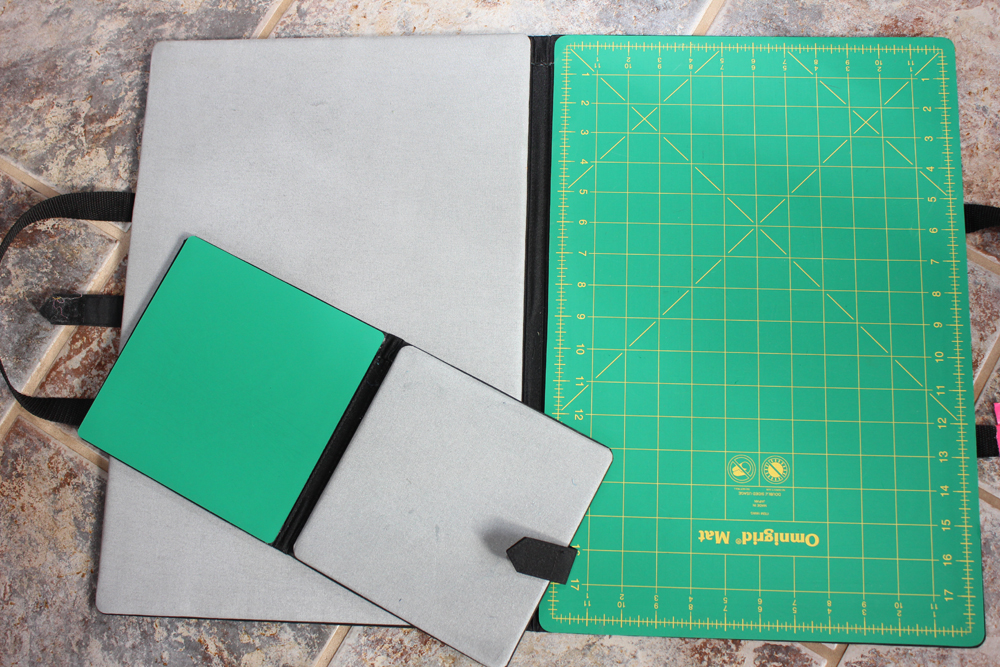
Ironing board or pressing mat.
This is a really awesome cutting mat and pressing mat combo that folds up and has carrying handles. It’s from Omnigrid.
Iron
No need for steam – steam can distort your fabric when pressing quilt seams.
Pressing sheets
These are completely optional, but applique pressing sheets can be a fun way to fuse your applique pieces in place.
Once you have all of your supplies you will be all set to enter the wonderful world of quilting. If you have any quilting questions, leave us a comment on this page or reach out to us on Facebook. And be sure to share photos of your progress in our quilting gallery!
Happy quilting!
Related Video:
Machine Quilting for BeginnersGet in touch! Leave a comment or email editor@nationalquilterscircle.com.
You might also be interested in:
7 Smart Ways to Keep Your Quilting Studio Organized
Your Complete Guide to Sewing & Quilting Threads
Essential Sewing Tools and Supplies
10 Quilting Tools Every Beginner Needs
I am getting a new quilting/sewing machine, I am looking at Juki, Janome, Pfaff, and Brother. Which brand would be the best machine to quilt with. I was an intermediate quilter but I am starting over as a beginner.
New to quilting
I am reading up on sewing machines. What would you recommend for beginner to intermediate. What brand name and weight of machine will work best. Than you
Any recommendations for an iron?
Is there a guide to quilting terminology?
<strong> What is your knowledge of sopranos baby lock with quilting arm?
What size rotary cutter should I buy pls?
Never tried quilting, do not have or want a sewing machine or an iron, just want to try a little hand quilting with scraps I already have for fun.
Would like 2 know more about making my own quilt
GREAT INFORMATION!!!!!